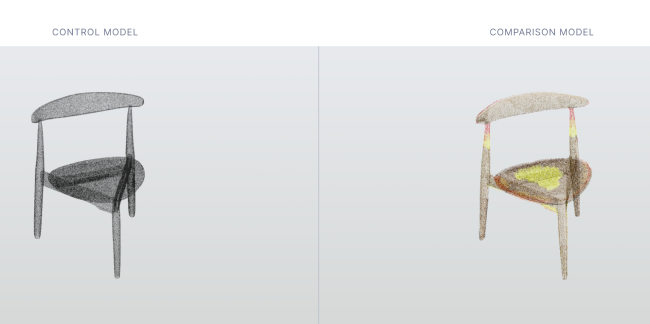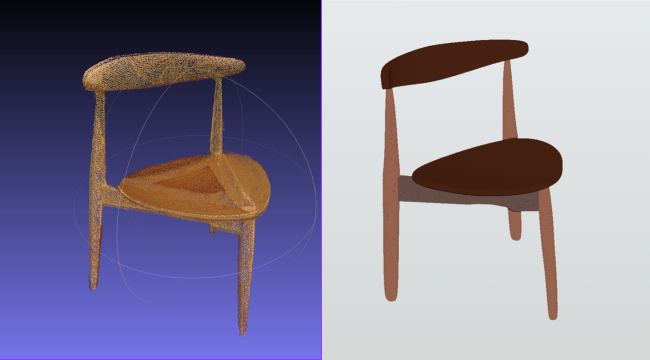
This past semester, I had the exciting opportunity to work on the Object Biometrics platform—a web-based prototype designed to analyze and compare 3D-scanned objects. The project blends technology, design, and storytelling, making it possible to highlight subtle but meaningful differences between physical artifacts. My role focused on creating 3D models, building visualizations, documenting workflows, and coding the site—all while learning from leading researchers and digital scholarship experts.
I collaborated with Professor Peter H. Christensen, Arthur Satz Professor of the Humanities and Director of the Humanities Center, on this interdisciplinary effort. I was also supported by Blair Tinker and Vini Romualdo from the Digital Scholarship team.
Here’s how the work came together:
From Scan to Visualization: Project Phases
1. Preparing the Data
We started with raw LIDAR scans—detailed point clouds representing real-world objects. Using software like ReCap and MeshLab, I cleaned the data to remove noise and properly align the 3D scans. This step was crucial for ensuring accurate visual comparisons.
2. Enhancing Visual Clarity
Next, I used Potree to color the point clouds, helping highlight specific features and improve readability. Adding color makes it easier to notice small differences in shape, structure, or wear—essential for analysis.
3. Modeling in Blender
To create a consistent baseline for comparison, I used Blender to construct idealized versions of certain objects. These clean, geometrically “perfect” models—known as Platonic models—serve as references that other objects can be compared against.

4. Telling the Story: Educational Videos
To show how the platform can be used in research and education, I developed a series of short, thematic videos. Each one introduced a different pilot project that used Object Biometrics to explore form and variation in physical design:
- Overview Video: Introduced the platform and explained its purpose and applications.
- Paleoindian Points: Showed how 3D analysis helps archaeologists study Indigenous stone tools.
- Modernist Chairs: Compared iconic 20th-century chair designs to examine stylistic evolution.
- 19th-Century Train Stations: Explored how similar blueprints led to diverse architectural results.
For each video, I edited voiceovers, sequenced footage, added transitions, and sourced additional B-roll to strengthen the narrative. I used Adobe Premiere Pro to bring all the pieces together into cohesive, engaging visual stories.
Skills & Tools I Gained
- ReCap & MeshLab: For aligning and cleaning 3D point cloud data
- Potree: For point cloud visualization and coloring
- Blender: For modeling idealized object forms
- Premiere Pro: For video editing and storytelling
What I Learned
This project taught me how to bridge the gap between digital tools and human stories. I gained hands-on experience in 3D modeling, coding, multimedia production, and research communication. Most importantly, I saw how digital platforms can help scholars—and the public—engage with history, design, and cultural heritage in entirely new ways.
Working with faculty and staff at the intersection of technology and the humanities showed me how students like myself can play a meaningful role in advancing research and creating tools that make knowledge more accessible.
About this Author
Tamuda Chimhanda, XR Specialist

